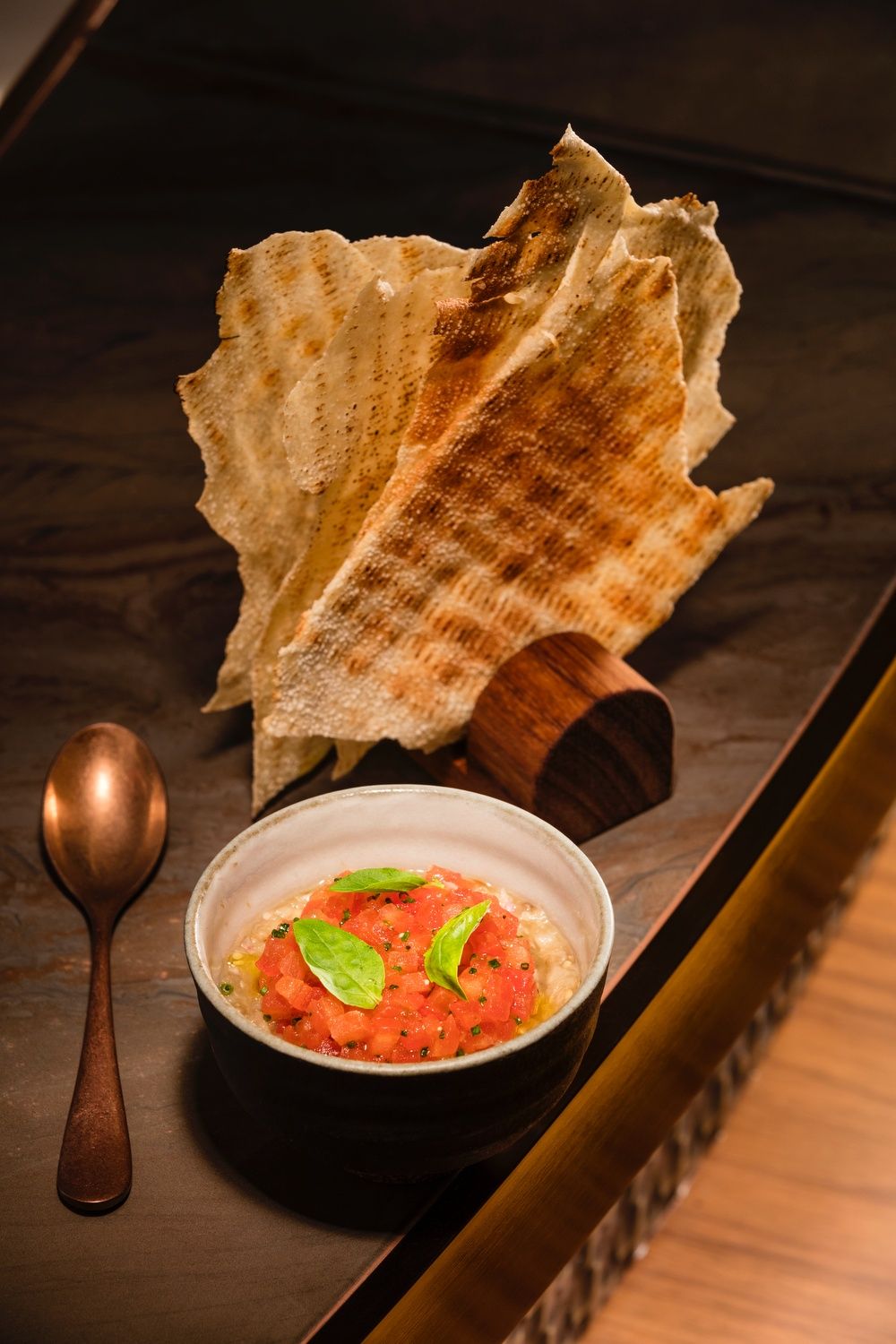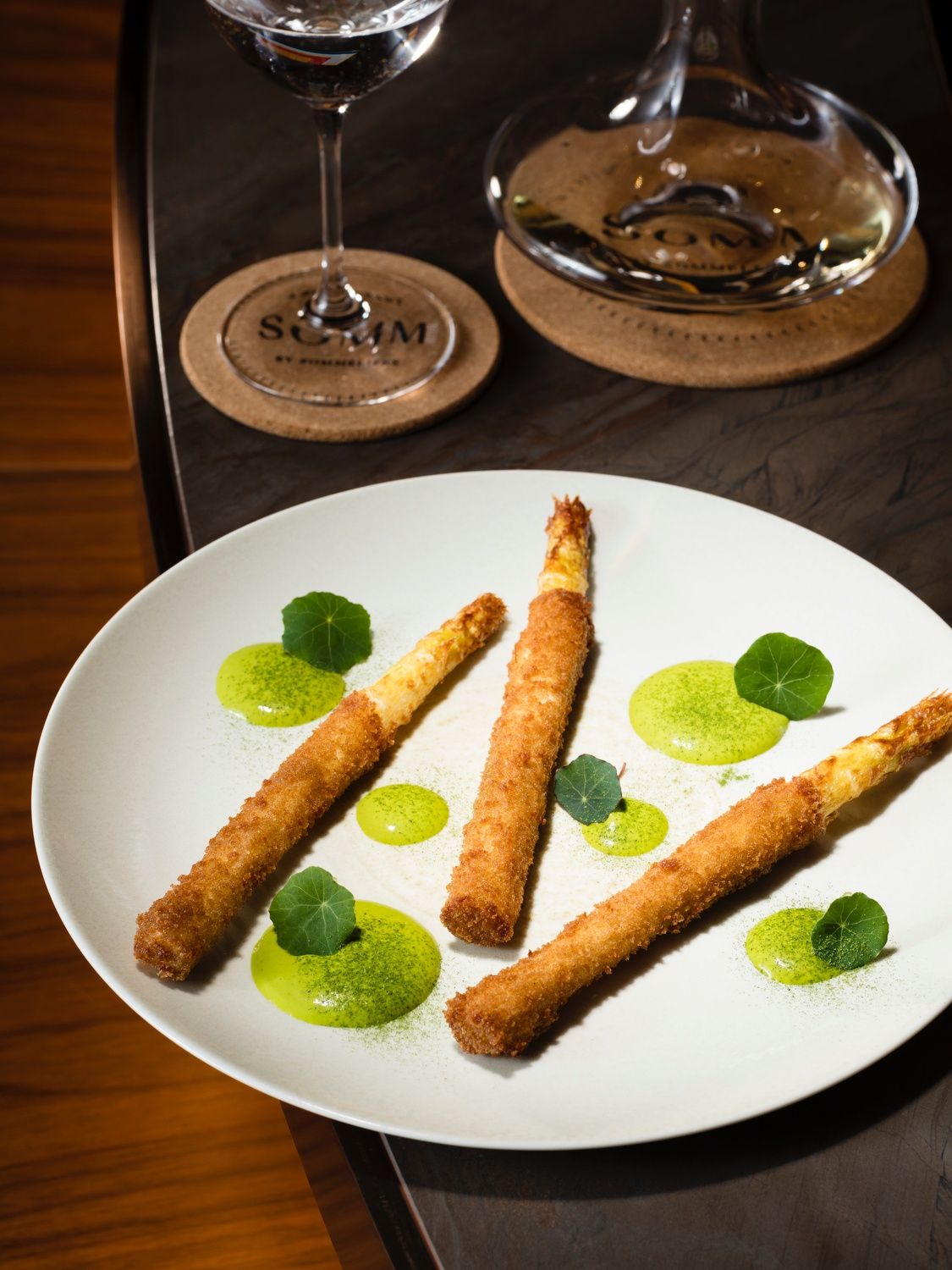Amber’s sister restaurant owes its success to bold flavours and innovative design elements
After months of renovation, Landmark Mandarin Oriental reopened its cluster of fine dining establishments, from the refreshingly new Amber to relocated Sushi Shikon and Somm, a new wine-forward bistro concept.
This new restaurant has taken over the space where Amber’s bar once resided. Guests turning left from the elevator are met with an inviting full-view of the establishment, aptly designed with warm, subtle lighting and an abundance of dark, walnut wood curated by New York interior designer Adam D Tihany, who also designs the old and revamped Amber adjacent to Somm. The curved, fluid lines along the bar area overlooks the vast display of wines, coherent with the round banquettes surrounding the perimeter of the establishment.

As a wine-focused bistro, Somm offers a more casual dining approach to its adjacent fine-dining establishment; nibbles are great for sharing with wines while more substantial courses are best for a structured dinner. Somm offers a full breakfast menu as well as all-day dining options. We began with kadaifi fried Taiyouran egg, sour cream, and smoked pike perch roe. A soft-boiled Japanese egg is wrapped with a golden cocoon of thread-like pastry, deep fried and served on a bed of lemon-flavoured sour cream and topped with a quenelle of pike perch roe. A clean cut into the crusty exterior allows the molten egg yolk to ooze, while the sour cream cuts its richness ever so lightly.
Crispy white asparagus and tarragon sabayon is a signature dish, where slender stalks of French white asparagus are dipped in sourdough breadcrumbs and deep-fried, accompanies by a herbaceous tarragon sabayon—a playful yet light foam, freshening the palate between bites. The foie gras kombu jime with kabu pickles and lemon, is a fusion of French and Japanese cuisines. A new edition of the foie gras dish formerly made famous in the old Amber, the duck liver is carved and wrapped in kombu, a technique often found in fish ageing. The rich liver absorbed umami from the kombu, while the lemon gel and tart pickles of white radish slices added tartness to balance the sophisticated combination.


